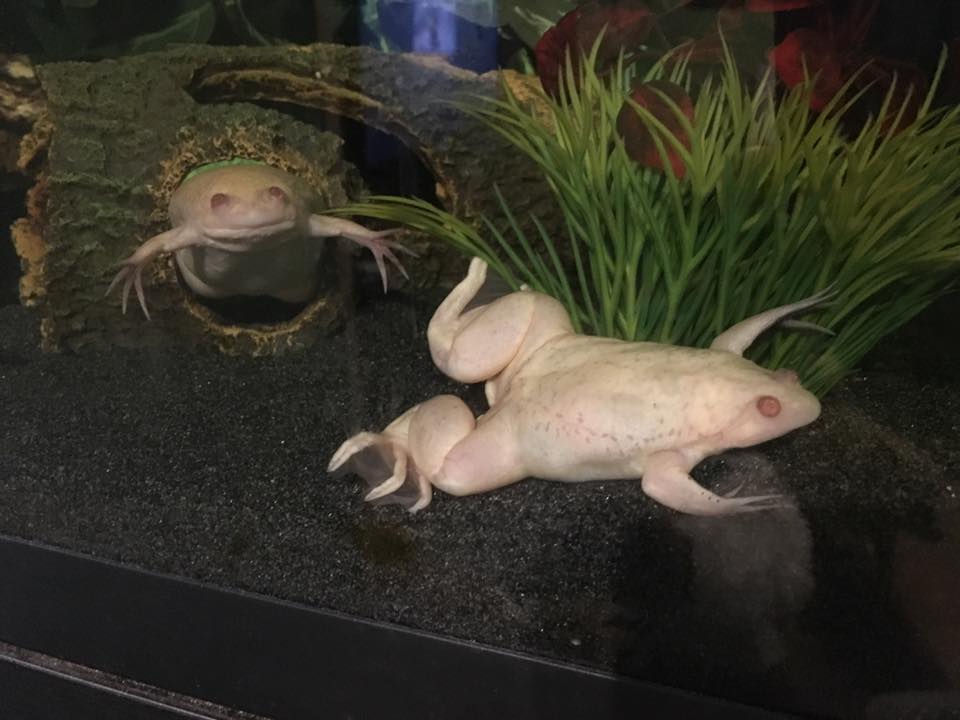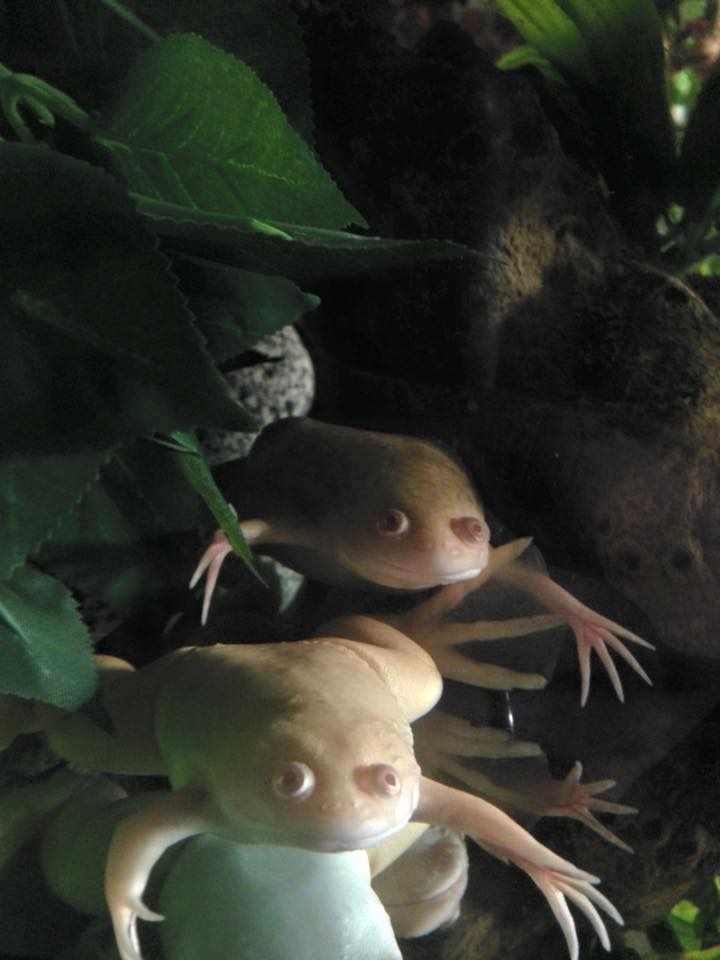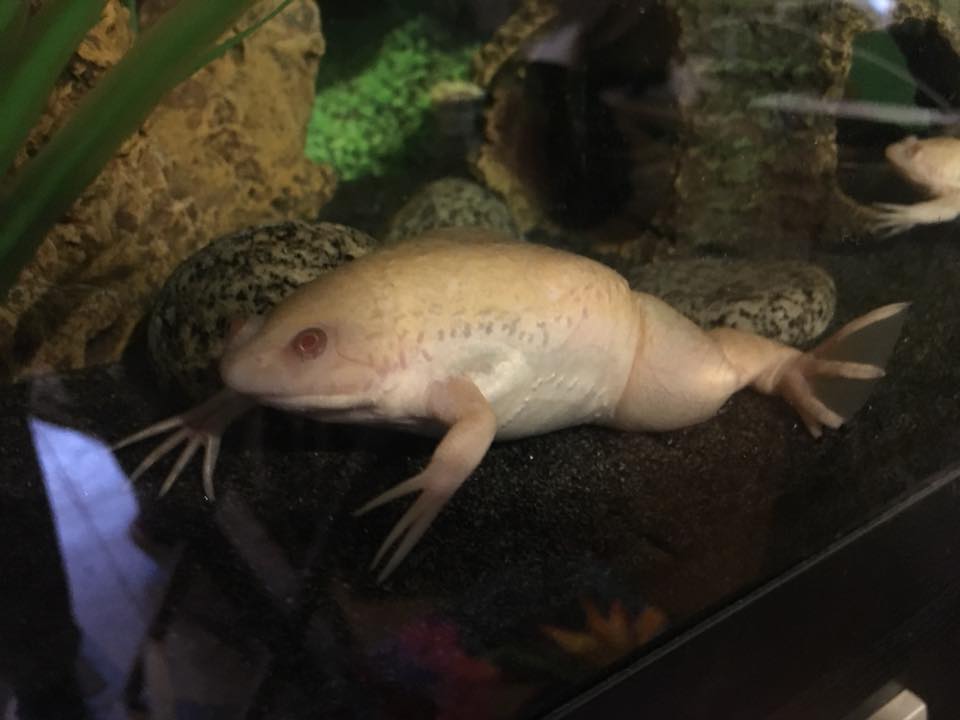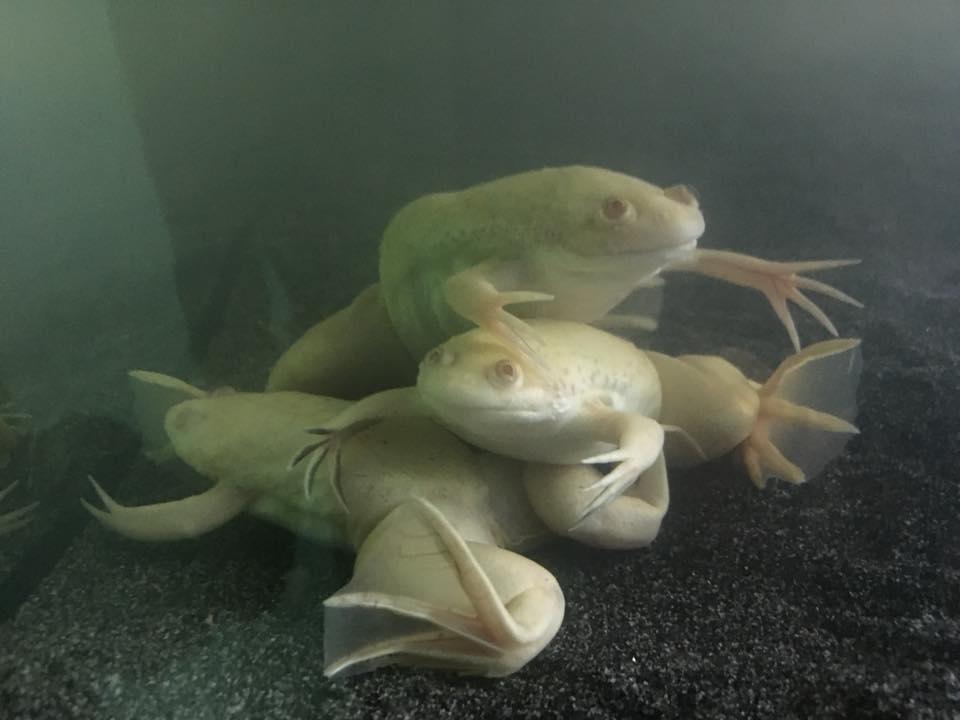African Clawed Frogs are a type of aquatic frog that can be kept as pets. In order to keep your frogs happy and healthy, it is vital their tank is set up correctly. Follow this blog to find out how.
How long do they live?
African Clawed Frogs live on average 5 – 15 years, but in captivity, they have been recorded to live as long as 30 years.
What size?
The size of your tank will depend on how many frogs you wish to keep. As these frogs are fully aquatic meaning they spend all their time in the water, a glass tank, such as a fish tank is ideal as it needs to be watertight. As a rule of thumb, a 10-gallon tank is a good size for one frog.
How many?
African Clawed Frogs can be kept with other African Clawed Frogs, so long as they are the same size. Anything smaller risks being eaten by the bigger frog. Be careful not to overcrowd your tank, and don’t be tempted to keep other species, such as axolotls or fish in with them, or they could end up as lunch.
Water quality
Your frogs need to be kept in dechlorinated water, as the chlorine in water can hurt them. You can either leave the water to stand for 24 hours, allowing the chlorine to evaporate, or add a water treatment to remove it. A quarter of the tank water should be removed on a weekly basis and replaced with clean, treated water.
A pump should also be used, but choose a quiet, gentle pressured one as loud noises and fast water will stress your frogs. You can put plants in front of the pump to slow the stream of water. I like the Fluval pumps as they have settings on them to change the flow of water. Just make sure you get the correct sized pump for your tank.
What about furnishings?
The tank bottom can be left bare if you so choose, or fine sand can be used if you prefer (I use this). Avoid gravel or stones as frogs can ingest these. Large rocks can be used, but it is hard to clean underneath them and food can get trapped under them, making the water murky.
African Clawed Frogs are nocturnal like to hide, so they should be given places to retreat to. A terracotta flower pot on its side makes a good hide, or you can use ones marketed for fish, just make sure its smooth as any sharp edges or bumps can hurt your frogs. Aquarium lights should be avoided as these frogs have delicate eyes and lights can hurt them. Position the tank in a dark area of the home, away from direct sunlight.

Diet
These frogs will eat anything they can fit in their mouths, so make sure the food item you give is appropriate for the size of your frog. Nightcrawlers are a good staple, as are bloodworms. You can feed reptomin pellets too which go down well. Careful not to overfeed and remove any uneaten food.
Sing, sing, sing
If you are lucky enough to have a male frog, once he has matured he may croak a song to the ladies. My males tend to sing at night and a few days later, the female will have laid eggs. The eggs are small, white dots and unless removed, the parents will eat them. Unless you want to raise babies, just leave the eggs in with the parents and let nature take its course.




